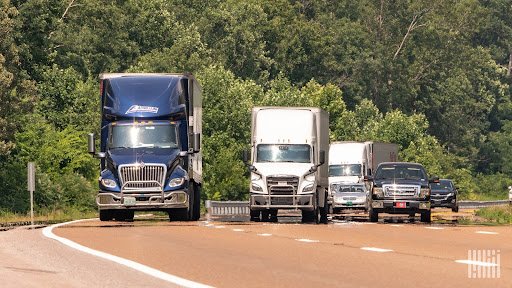
There’s this belief floating around that 10 trucks is the magic number. That once you hit double digits, you’ve made it. That it somehow guarantees seven figures, financial freedom, or a smooth operation.
But the truth is—and I say this as someone who’s coached hundreds of carriers—there are folks with three trucks doing $1.1M in gross, and folks with twelve trucks scrambling to cover payroll every Friday.
In a market like this—where diesel is unstable, brokers are holding margins tight, and volume can swing 20% week to week—you don’t win by stacking equipment. You win by building a business that’s lean, strategic, and focused on what matters: profit, control, and repeatability.
During the 2021–2022 run-up, you could be sloppy and still stay afloat. Rates were high. Load boards were hot. And even the worst-run operations were making money.
That season’s over.
In 2025, you’re dealing with:
That means every decision—from the truck you buy to the lane you run—has to be intentional.
Seven figures is no longer a milestone you stumble into. You have to plan for it, price for it, and operate into it.
Let’s start with a mindset shift.
Truck count is not a business plan. It’s not even a meaningful metric without context.
I’ve seen two-truck operations with 35% net margin and no debt. I’ve seen ten-truck operations hemorrhaging $25,000/month because their back-office couldn’t scale, their fuel was unmanaged, and their drivers weren’t retained.
You want to grow? Good. But what are you growing into?
If you don’t have those answers yet, adding more trucks is not scaling—it’s multiplying risk.
Let’s go beyond the theory. Here’s how two trucks can cross a million in gross revenue with the right discipline.
Assume:
Now layer in one dedicated lane, brokered run, or subcontracted specialty job that adds $3,500/week in recurring revenue:
That’s seven figures—with two or three trucks and one specialty angle.
But here’s the key: You only get there if you’re tracking every cost, maximizing every mile, and avoiding the distractions that come with chasing load boards 24/7.
Before you set a truck goal, set a business goal.
Too many carriers scale without intention. They buy more trucks because they think revenue equals success, without realizing that growth without margin is just busier bankruptcy.
Ask yourself:
Don’t just chase growth—chase growth you can manage, sustain, and repeat.
I’ve seen it too many times: a carrier starts making money with one or two trucks and decides to scale—but their operation is still being held together with spreadsheets and phone calls.
Adding more trucks just multiplies the cracks.
If your first truck isn’t profitable, your fourth won’t save you. If you can’t invoice cleanly today, ten trucks won’t help you get paid faster. Every inefficiency gets amplified as you grow.
Scaling isn’t about the number of trucks—it’s about what your business can handle with precision.
Smart carriers scale like this:
These are the carriers that actually stay in business when the market shifts.
If your goal is to build a million-dollar trucking business, here’s how to think about it:
Bottom line: Don’t plan to grow. Plan to be ready for growth.
You don’t need 10 trucks to hit seven figures.
What you need is:
Three trucks with control will outperform ten trucks with chaos every time.
If you’re thinking about growth, start with questions—not purchases:
If the answer is yes, you’re ready to scale. If not—build foundation first.
Because real growth in this market isn’t about truck count. It’s about operating on purpose, not impulse.
Want seven figures? Great.
But make sure it’s seven figures worth keeping. Not just seven figures worth bragging about.